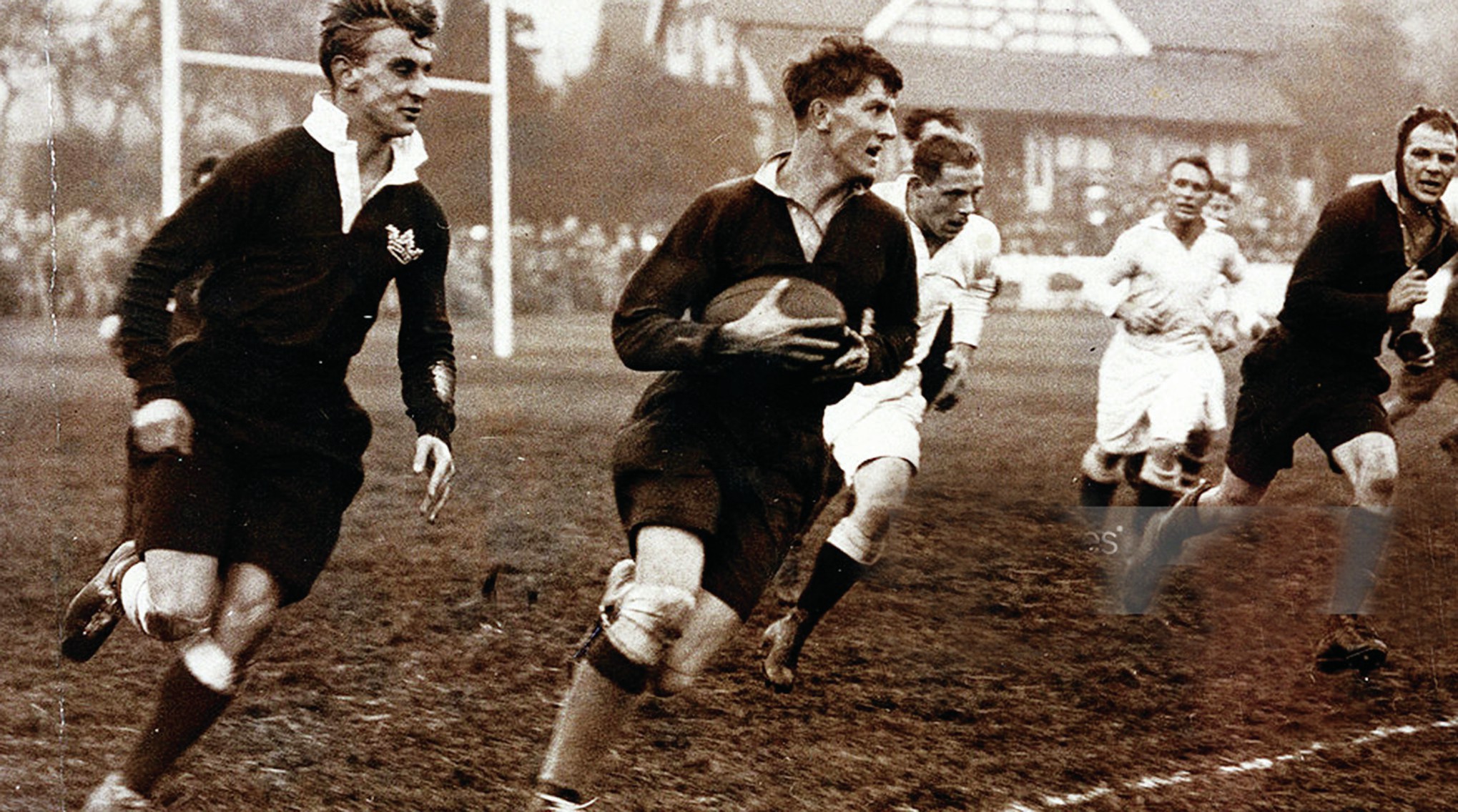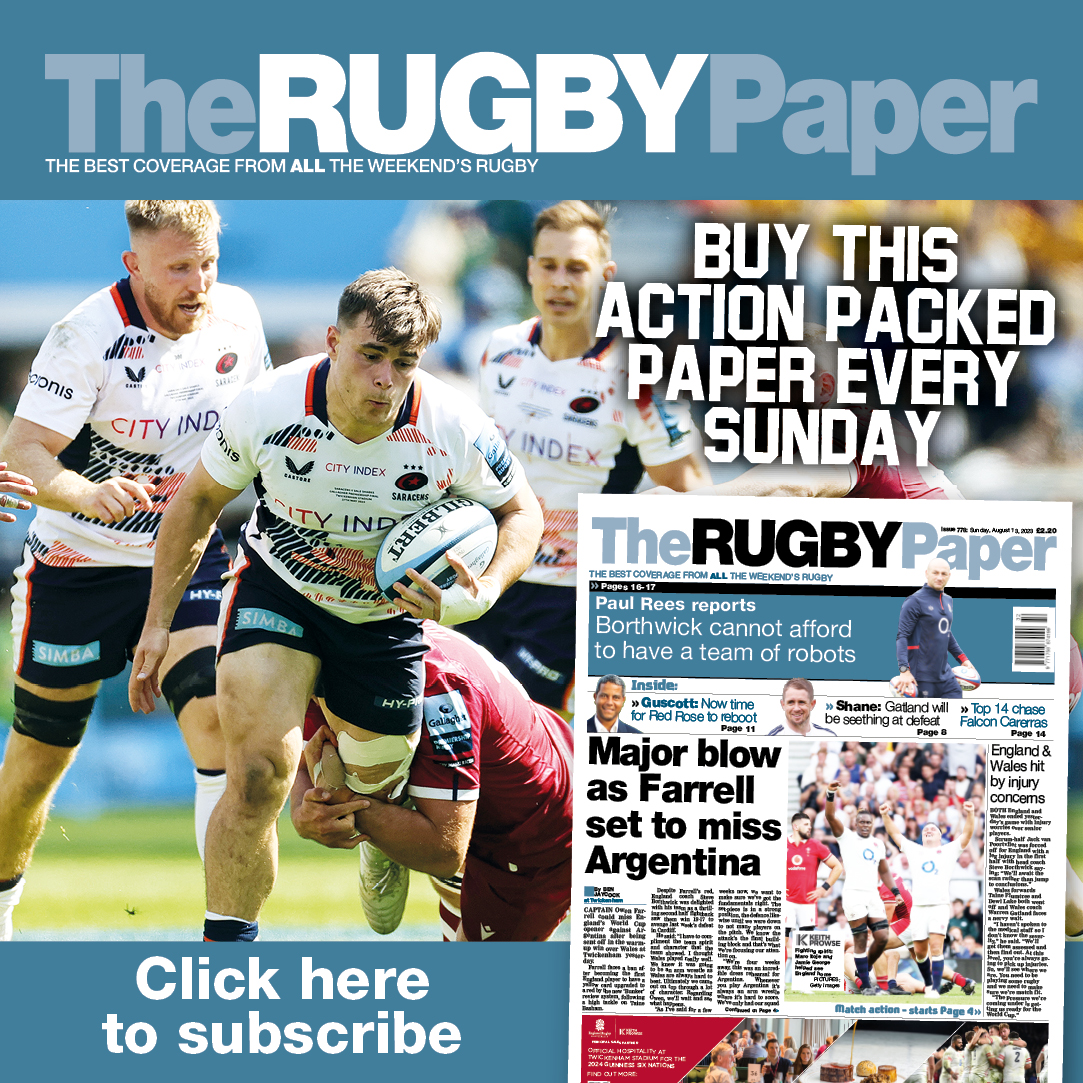Brendan Gallagher delves into some of rugby’s most enduring images, their story and why they are still so impactful

Iconic Rugby Pictures: PART 74
Prince Obolensky playing for Oxford November 1937
What’s happening here?
It’s late November 1937 and a dank afternoon at Iffley Road for Oxford’s annual game against Major Stanley’s XV. The Pavilion/changing room in the background, where the players used to warm their hamstrings in front of the splendid coal fire, remains to this day. Fly-half Ian Watts, one of five rugby playing brothers from the Hoylake club, is attacking audaciously from deep in his own half and outside him is Alexander Obolensky, the Russian Prince who had become the pin-up boy of English rugby.
What’s the story behind the picture?
Obolensky blazed a brief but glorious trail yet this picture was taken when his international career had already been over for a year or more…although nobody knew that.
He had first come to recognition two years earlier when, as a second-year student he made the Dark Blues XV and scored a spectacular 70-yard try in Oxford’s 10-9 defeat against the All Blacks. A few weeks later he was making the headlines again in the Varsity match when he accelerated over the Twickenham turf to drag down JR Rawlence when the Cambridge wing had seemed certain to score. As a result the game ended as a 0-0 draw.
The England selectors took note and in January 1936 he made his England debut against the All Blacks at Twickenham and scored two of the best tries ever seen at the home of English rugby as England beat the tourists convincingly.
A star was born but Obolensky had made a rod for his back. Nobody could live up to the expectations heaped on him. He was ever present in that season’s Five Nations and scarcely received a pass but that summer toured South America with the Lions. There are mixed reports of his form there in the big game in Argentina although he reportedly scored an unlikely 17 tries in an unofficial game against Brazil.
On his return though life became a little tougher. He suffered a bad injury and missed the 1936 Varsity match and then dropped out of England contention. He was not a natural rugby player – rather he was a phenomenal athlete who turned his hand to rugby – and England as ever were suspicious of such a maverick talent.
The 1937-38 season dawned and Obo was again fighting for his place. The Stanley’s match was still looked on as an unofficial England trial and then came the Varsity match itself.
What happened next?
Obolensky showed up well in Oxford’s victory over Stanley’s and soon after came the Varsity match. Oxford, despite surviving on about 20 per cent possession won 17-4 scoring five tries in the process but, alas for Obo, play didn’t run his way out there on the right wing and although he was left celebrating his first Varsity match victory he was unable to further his cause with the reluctant England selectors. Come the 1938 Home Unions Championship he was again surplus to requirements, which was again the case in 1939.
Why is the photograph iconic?
I love the sense of movement and flow in this picture and the feeling of standing there on the touchline. Very few pictures from this era possess that immediacy.
The best known Obo pictures seem posed to some degree. The famous overarm lineout throw, that casual head and shoulders picture in his Oxford sweater and sadly there are no still pictures – only grabs from Pathe footage – of his glorious tries against the All Blacks.
This picture, though, is completely natural. He is not even the main subject of the picture but your eyes are nonetheless quickly drawn to Obolensky as he supports Watts.
There is much else to observe. I’m guessing Watts was a decent poker player because he is studiously ignoring Obo on his right. Of course he knows the flying Russian is there on his shoulder – that’s the reason he is breaking from deep in his 22 – but an amusing game of bluff is taking place.
Obo meanwhile is staring only at the ball. He has gone into business mode and getting the ball and scoring is his only concern. He looks the supreme athlete and blond bombshell with his mop of hair and chiselled cheeks and to these eyes he is already dabbing the brakes a little so as not to overrun Watts. You can just get a glimpse of his famous lightweight dubbined boots he had especially made at Elmer Cotton’s in Oxford.
Finally running the inside support line in his trademark scrum cap is Robert ‘Mike’ Marshall who was being hailed as the new Wavell Wakefield.
Marshall won five caps before World War 2 and was touted as England’s next captain but was killed four days after peace was declared when the gun boat he was taking to Gothenburg to repatriate merchant seamen hit a rogue mine. During the war he had already received a DSC and bar.
Footnote: As war commenced Obo experienced a renaissance in form and had been selected for a wartime international between England and Wales when he was killed during training with the RAF when his Hurricane L1946 crashed while landing at Martlesham Heath, near Ipswich, on March 29, 1940. He was just 24 and the first rugby international to die in the conflict.
























